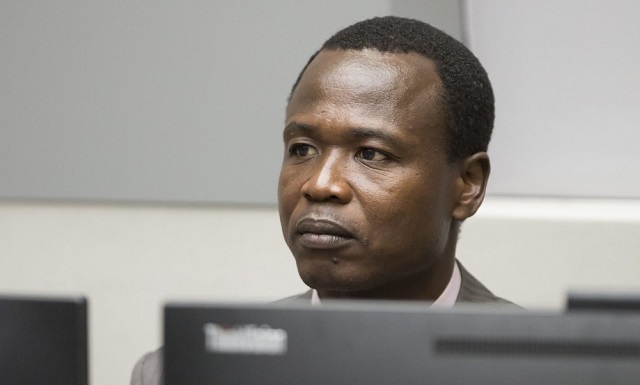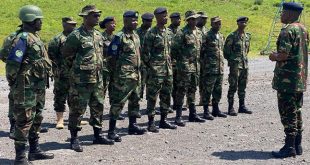
Your Honours,
The evidence shows that, in each case, Dominic Ongwen played a prominent role in the planning and execution of the four attacks. For all of them, save Pajule, he did so as the commander of one of the four principal operational units of the LRA, the Sinia brigade.
In addition to his responsibility for the attacks on the four camps, the Prosecution charges him with crimes related to the abduction of children and their use by the LRA as child soldiers or forced wives and sex slaves.
The purpose of these proceedings is to establish whether it can be proved beyond reasonable doubt that Dominic Ongwen bears criminal responsibility for these crimes.
In the course of the trial, light will inevitably be shed more generally on the situation in Northern Uganda a decade and a half ago. But there will be many events, many crimes, many perpetrators of crimes and many victims who will receive only limited attention or none at all.
The Prosecution has to make choices guided by the evidence readily available and to limit the scope of the cases that it brings. Our efforts will be to ensure that this trial will establish the truth and nothing but the truth with regard to the charged crimes. We cannot hope to write, in this trial, a comprehensive history of the conflict in Northern Uganda.
Your Honours,
Over the period with which this case is concerned, Dominic Ongwen became one of the most senior commanders in the LRA. Between 2002 and 2005, he was the commander, first of a battalion and then, following rapid promotion based on his unwavering loyalty and ferocity, of one of the four fighting brigades of the LRA. There is evidence to suggest that, by the second half of 2005, Mr Ongwen was the most senior LRA commander in Uganda.
So what was the nature of the LRA, the organisation in which Dominic Ongwen played such an important role, and which was causing mayhem and visiting misery on the people living in Northern Uganda?
The LRA was founded and led by a man called Joseph Kony. Kony is one of five individuals against whom arrest warrants were issued by this Court in 2005. He remains at large. There is good reason to believe that three of the others for whom warrants were issued by the Court, more specifically Messrs Vincent Otti, Raska Lukwiya and Okot Odhiambo, are deceased. The fifth, Dominic Ongwen is on trial today.
It is enough, for now, to say that LRA is an armed group which came into being in Northern Uganda in the late 1980s. It aimed to overthrow the government of Yoweri Museveni, the President of Uganda. At first, it was just one of a number of such groups, but by 1990, Kony’s force was the only significant armed unit still fighting against the government in the Acholi homelands. The LRA was a disciplined hierarchical armed group with a formal rank structure mirroring that of a conventional army. The headquarters unit was known as “Control Altar.” Its principal active service units were four brigades named “Sinia”, “Gilva”, “Trinkle” and “Stockree.” Orders flowed down the chain of command. Reports on operations were transmitted back up the chain of command. By March 2004, the Sinia brigade was commanded by Dominic Ongwen.
Discipline in the LRA was strict and punishments for infraction of the rules brutal. Attempts to escape were dealt with particularly harshly: those who were caught were either put to death or caned so severely that permanent injury was often caused. Despite this, the majority of abductees did, in the end, escape the clutches of the LRA. Many prosecution witnesses will recount to the Court how they personally were able to escape.
There were peace negotiations between the LRA and the Ugandan Government in the mid-1990s. When they failed, the Sudanese government began to provide support to the LRA. The LRA set up semi-permanent bases in Southern Sudan, from which it was able to launch its attacks on Ugandan targets.
This continued until 2002, when the Sudanese government permitted the Ugandans to enter Sudanese territory to begin a renewed military campaign against the LRA called “Iron Fist.” Kony and his senior commanders evaded death or capture, but the majority of the LRA forces left Sudan and expanded their campaign in new parts of Northern Uganda, including Lira, Soroti, Apac and Katakwi districts. A series of LRA attacks and atrocities, including the four on which this trial will focus, followed with disastrous results.
 The Independent Uganda: You get the Truth we Pay the Price
The Independent Uganda: You get the Truth we Pay the Price


